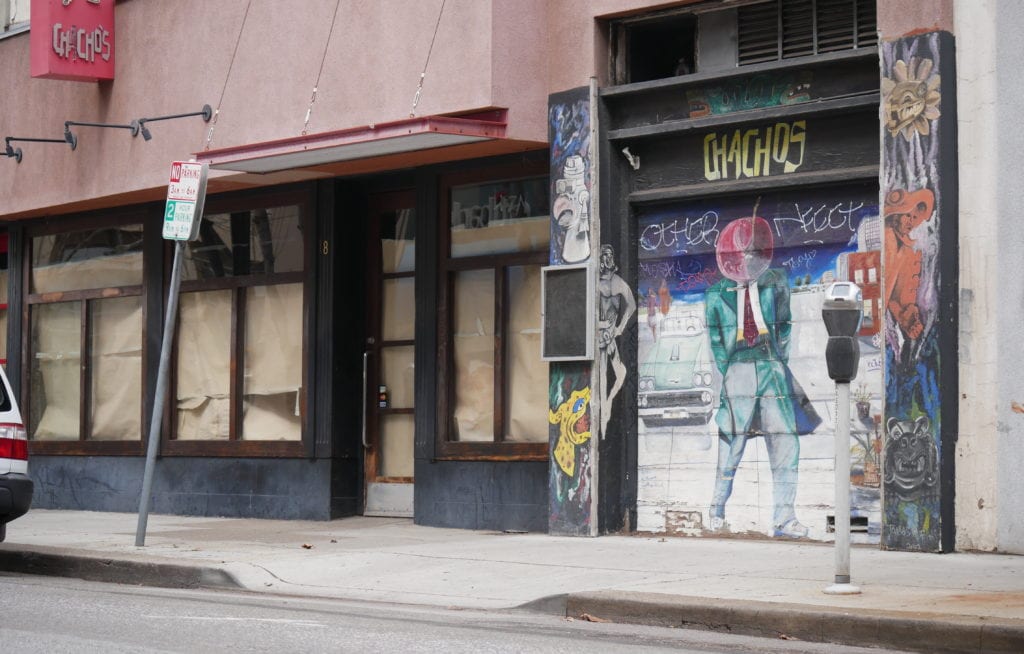The San Jose Downtown Association unveiled a plan Friday morning at its first public meeting since February to hasten the neighborhood’s economic recovery from the devastating effects of COVID-19 — with a focus on filling empty storefronts and keeping existing commercial tenants in business.
Through a grant from the Knight Foundation, SJDA hired Progressive Urban Management Associates, a Denver-based consulting firm that specializes in downtown rejuvenation plans nationwide, to examine the effects of the pandemic on downtown and develop an organized response to help businesses in the area bounce back, and attract new tenants to fill vacant space.
Trends were very favorable for downtown areas across the country, leading up to the onslaught of coronavirus, said PUMA President Brad Segal.
“But that was all turned upside down in March,” Segal said Friday.
Nevertheless, he remains confident that “after we’ve all been vaccinated,” those favorable trends will re-emerge stronger than before.
“We feel downtowns will bounce back,” Segal said. “And we think they will do that relatively quickly once the pandemic has been resolved.”
But there’s hard work to be done between now and then.


“The pandemic has revealed the fragility of the storefront economy in downtown San Jose,” according to PUMA’s plan. “Additional focus here is needed beyond the stabilization period, into the foreseeable future. As the economy recovers and if there is a surge in entrepreneurship, SJDA has a role in directing investments into storefronts.”
To that end, the plan identifies an opportunity for the association to establish a street-level small business support center. The center will “make services more accessible,” by facilitating “al fresco” operations and providing assistance meeting COVID-19 related public health orders as more business categories are allowed to resume indoor operations.
And “coupled with increased outreach to businesses,” the center will collect “real-time data” on businesses and customers returning downtown as public health restrictions on commercial businesses are lifted. PUMA’s plan also calls for the association to “explore an investment fund to support storefront regeneration.”
“Supporting the storefront economy has been a top priority for SJDA, and should be ramped up,” according to the PUMA plan. “There are no other organizations in the city that have the capacity or scope to work on this challenge with the hands-on day-to-day attention it deserves. This includes direct business support for existing and new tenants, working on storefront leasing and activation with property owners, and temporary activation where necessary.”
As it focuses on attracting small businesses to vacant storefronts, PUMA’s plan also noted that having a vibrant community of local businesses downtown will benefit large office tenants like Google and Adobe — when office workers eventually return to the area.
“There is an opportunity to support locally-owned and minority-owned businesses that reflect the character of the San Jose community,” the plan says. “A strong storefront economy is critical to downtown’s vitality and diversity. Furthermore, it is important to the large employers and developers trying to attract workforce talent and new residents to downtown.”
To develop the plan, PUMA solicited input from 30 key stakeholders downtown and surveyed more than 1,250 people online. Thirty-two percent of those surveyed were residents of downtown and another 40% were San Jose residents living somewhere else in the city. Twenty-eight percent of respondents worked downtown. Respondents also included downtown property owners and students at San Jose State University.
Among the chief concerns of those surveyed is that the homeless population downtown had either increased or become more visible as fewer office, retail and restaurant employees spend their weekdays in the neighborhood.
No downtown association in the country can solve homelessness, Segal said. But San Jose can do more.
“Homelessness is a challenge in cities all over the country, particularly up and down the coast of California,” Segal said. “We’re not going to cure homelessness. It’s a nationwide problem and it requires a national and state response.”
However, Segal added, SJDA may have a role to play in helping homeless residents of downtown access services they need to transition out.
“There are many dimensions to the issue of homelessness — the population is diverse, and that requires a nuanced approach — some people are down on their luck and looking for a way out, others are there by choice and others are there because of the failures of our mental health and social welfare systems,” he said.
SJDA Executive Director Scott Knies said it may be time for the association to look into branching out into homeless outreach and even case management if need be.
“Perhaps we should be stepping into that role,” Knies said.
Contact Adam F. Hutton at [email protected] or follow @adamfhutton on Twitter.
SJDA Stabilization Plan FINAL Aug13-20 Full



Leave a Reply
You must be logged in to post a comment.